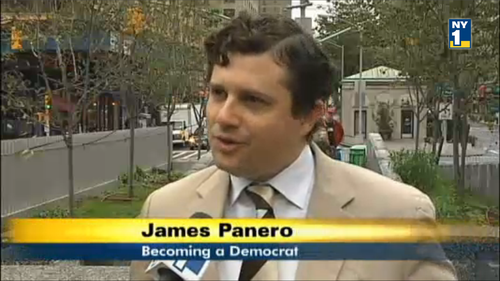Noshat Nahian didn’t have to die.
NEW YORK DAILY NEWS
January 16, 2013
Put the pedal to the metal to save pedestrians' lives
But 'Vision Zero' is a shared responsibility; don't leave it to de Blasio and Bratton alone
by James Panero
Crossing the street shouldn’t cost you your life. But that’s just what happened to two New Yorkers last Friday evening, blocks away and within an hour of each other on the Upper West Side.
Alexander Shear, a 73-year-old father of two, was walking to dinner when a tour bus ran him over as he crossed at 96th St. and Broadway. The bus dragged his body to Amsterdam Ave. before horrified witnesses were able to hail down the driver.
A half-hour later, Dr. Richard Stock, a radiation oncologist, was holding the hand of his 9-year-old son, Cooper, when a taxi making a left turn from 97th St. onto West End Ave. struck both of them in the crosswalk. Cooper’s body was crushed when the cab rolled over him, according to a witness account, and Stock cradled his son as he bled out on the street.
For a city of walkers, New York has long allowed drivers to dominate its streets. The result has been a tragic disregard for public safety. In 2012, according to police data, motorists killed 150 pedestrians in the city and injured more than 11,000. Annual totals declined over the Bloomberg years, but that’s small comfort to the thousands whose lives were affected.
Many of these crashes took the lives of children. A study by Transportation Alternatives and the Drum Major Institute reports that being struck by a car is the most common cause of injury-related death for city children.
Last February, a truck killed 6-year-old Amar Diarrassouba in a crosswalk in East Harlem. Last June, 4-year-old Ariel Russo was walking with her grandmother on W. 97th St. near Amsterdam Ave. when a teenager in an SUV, who was fleeing police, jumped the curb and struck them both, seriously injuring the grandmother and killing Ariel. In December, a truck killed 8-year-old Noshat Nahian in a crosswalk in Queens.
On Wednesday, Mayor de Blasio, Police Commissioner Bill Bratton and other officials promised a new, “comprehensive road map” to eliminate deadly crashes. It’s inspired by a movement called Vision Zero — with the goal of eliminating traffic-related death and serious injury.
The mayor formed a task force, due to report back to him in a month, and Bratton has devoted more resources and manpower to combatting traffic fatalities.
Good. Urgent action, with follow-through, is in order.
The first step is aggressive policing of traffic laws. Even in cases of serious pedestrian injury and death, law enforcement has rarely charged drivers with serious crimes. According to Streetsblog, nearly half of all drivers who take the life of a pedestrian or motorist in New York do not even receive a citation for careless driving.
In Albany, police unions have stood in the way of allowing speed cameras on city streets. After a decadelong battle, the first cameras have only recently been installed around a handful of school zones in a five-year pilot program. De Blasio wants more, and said that those already in place would immediately start issuing tickets.
The second step is redesigning traffic laws to reduce the number of vehicles cruising the city — and to redraw the streets to take into account their full uses by drivers, bikers and pedestrians.
De Blasio plans to push for more residential streets to come down to a 20-mph speed limit, and that can make a difference.
The most dangerous places for pedestrians are not a mystery. In 2008, an extensive study conducted by the Upper West Side Streets Renaissance campaign identified the very corners and very turns where Alexander Shear and Cooper Stock lost their lives, recommending traffic calming measures to slow cars down.
These are vitally important steps. But ultimately, there’s a third — and for this, the onus is shared. Creating safer roads means changing the behavior of those who use them — to ensure that those who speed, or drive carelessly, or even, as bicyclists and pedestrians, veer into traffic, keep one another in mind.
To get to Vision Zero, we must all rethink our relationship to shared space and put safety first, even if it costs us a few extra minutes on the road.

